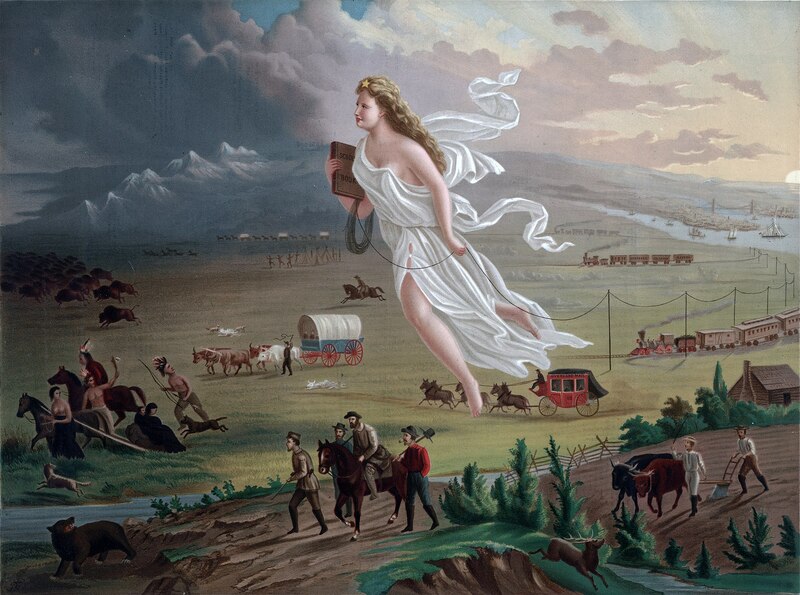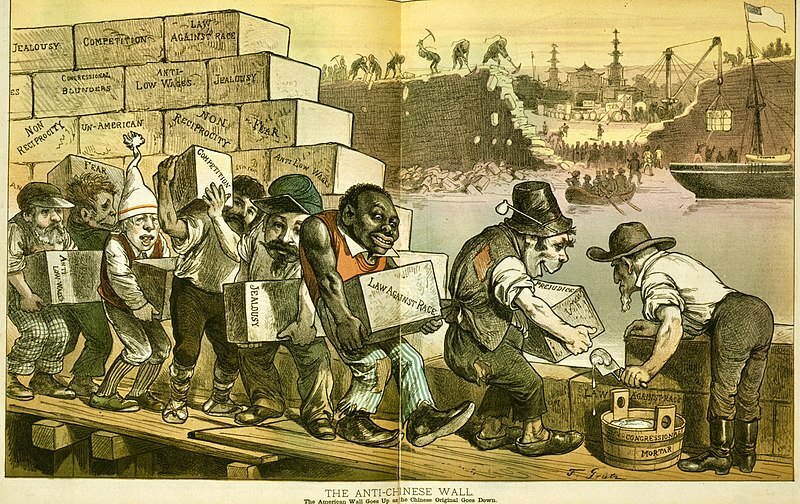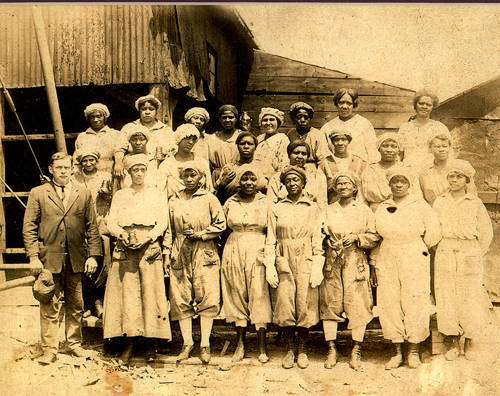Conclusion
John Gast's famous painting (above), which was distributed widely in the late nineteenth century, crafts an image of the Midwest and the western states beyond it, as a land of working men. The few women who appear in his painting, either float as an allegory of the busy continent of America, or are Native Americans, trudging off canvas. In Gast's portrayal, the continent's people are moving and industrializing rapidly, but the workers are all men.
Similarly, in Friedrich Graetz's cartoon (above) from ten years later, all the immigrant workers are men. In his depiction, no women or children traveled with their husbands, fathers, and brothers to North America to build a new life through the sweat of their brows. As these images remind us, in the late nineteenth century the American worker and the immigrant was often envisioned as male by the American public.
We know from the Town On Fire 2021 exhibit that this is not true. The six women profiled in this exhibit all lived in Muncie between 1870 and 1930, and exemplify the varied origins and work that women did. While both Mary Caroline Russey Smith and Mabel Keuchmann were born in Indiana and moved to Muncie as a child, other women chose to reside there as adults. Sallie Harris Herrmann and Lee See Chin moved with their husbands and set up businesses that contributed to its economic strength. Cornelia Frazier and Ruby Leota McCray arrived as young women, whose families were part of the great movement of African American workers whose presence signaled a new openness to diversity.
To understand and appreciate the history of Muncie, is to find the unsung workers and tell their stories. We hope that this exhibit shows how the historian's process can do that by dispelling stereotypes and celebrating difference. Each of the six biographies helps us see how today's narratives of diversity, gender equality, and building stronger communities have deep (but sometimes conflicted) roots. Undoubtedly, we are stronger together, but only when we embrace our truly diverse and complex past.



